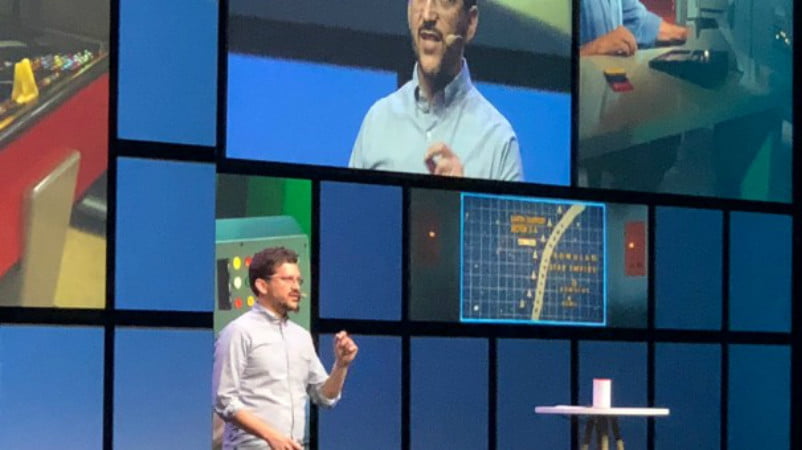
Amazon’s keynote address at IFA 2018 in Berlin was all about voice, specifically how the Alexa voice assistant is building a new industry, as noted by Dealerscope.
Keynoter Daniel Rausch, Amazon Smart Home vice president, traced Alexa’s history and development beginning with inspiration by Star Trek communicators. Today, according to Rausch, the Alexa voice skills platform supports more than 50,000 unique skills and 20,000 Alexa-enabled devices.
Amazon’s metrics show tens of millions of users interacting with Alexa to control their digital worlds. Customers address Alexa to request music, shop online, ask questions, make voice calls, ask questions, check or change their schedules, and manage smart home devices, appliances, and systems,
But what’s happened so far is just the beginning, according to Rausch. “We know we’ve barely scratched the surface,” he said.
During his keynote, titled “Speaking to the Future: How Voice is Expanding and Improving Everyday Experiences,” Rausch alluded to the successful, self-sustaining growth model Amazon established to support Alexa and partners.
Shortly after Amazon launched the Echo, it opened developer support in the form of the Alexa Skills Kit. Adding the Smart Home API to the Skills Kit made it easier for developers to add Alexa compatibility to smart home platforms. As more devices become Alexa-enabled, user demand for voice control grows. The market feeds itself.
Amazon also made it easy for customers to build their own Alexa skills with Alexa Blueprints, introduced earlier this year. Customer engagement builds loyalty and trust and also supports the argument for an Alexa-responsive device in every room of the house.
Rausch gave the IFA audience evidence of success for companies that build Alexa-enabled products and those that add Alexa compatibility with Works With Alexa. Rausch cited Amazon data that companies that launched an Alexa-enabled device saw 43-percent business growth in the following nine months. Also, products with Amazon’s Works With Alexa certification quickly realized an average 53-percent jump in business.
In Rausch’s original keynote blurb, he promised to make a case for the growth of voice control overall and the Alexa platform specifically.
“Amazon has spent years innovating to deliver voice capabilities through Alexa, and today there are hundreds of thousands of developers and device makers building Alexa experiences,” Rausch wrote. “As customer demand for voice-first interactions continues to grow, new advancements in machine learning, artificial intelligence, and cloud services are contributing to an ever-increasing range of Alexa capabilities for customers and new opportunities for device manufacturers and skill builders.”
Earlier this year Amazon empowered Alexa with a new machine-learning-based CanFillIntentRequest interface within Alexa to enlist skills users don’t even know exist to fulfill requests.
Ruhi Sarikaya, Amazon’s director of applied science, wrote about other Alexa capabilities in the works at the time, all focused on allowing users to interact with the voice platform using natural language. Amazon refers to the process as making conversation with Alexa “friction-free.”
Sarikaya wrote about adding context carryover and a memory mode to Alexa capabilities. Rausch addressed the same features in his keynote, now called Contextual Mode and Follow Up Mode. With these features enabled you won’t have to start each statement with “Alexa” or repeat key content in a continued conversation. For example, if you asked, “Alexa, where is the Elvis Presley Museum?,” upon receiving the answer you could then say, “What’s the temperature there today?”
Rausch also mentioned Amazon working with open APIs for automobiles, hotels, and office services to give Alexa wider exposure in more environments, Dealerscope reported.
Amazon helps partners, developers, and consumers build for the Alexa voice platform in the belief that voice control will be a dominant interface shortly, especially with 5G on the way.

